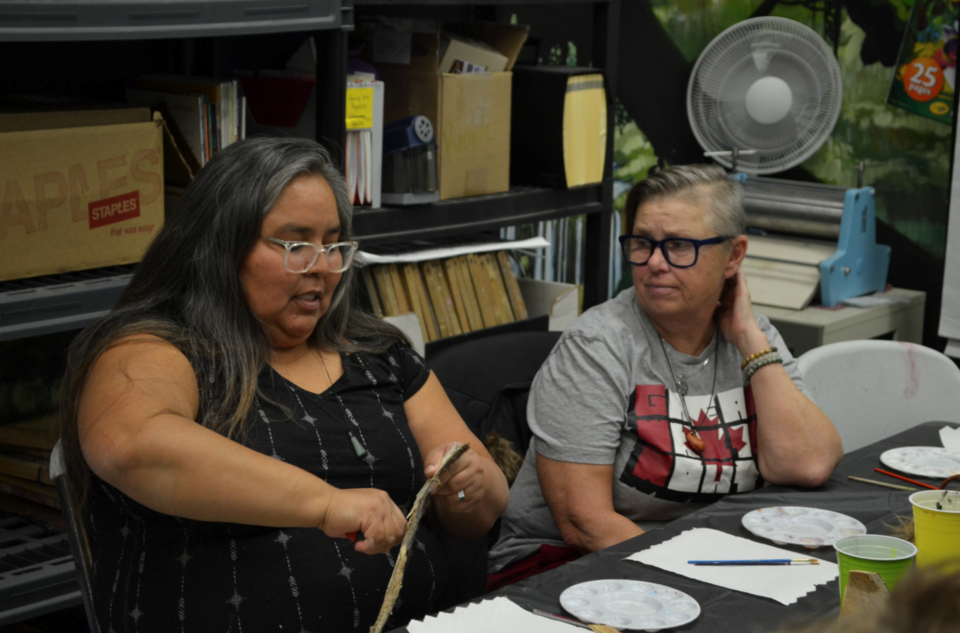For Joely BigEagle-Kequahtooway, her artwork is all about the buffalo.
The White Bear First Nations artist was at the Estevan Art Gallery and Museum last week for a project through the Common Weal Community Arts Respond to Racism initiative. All of her art is about buffalo.
“I write about buffalo, I paint buffaloes, and I talk about the history of buffalo to educate,” she said. “I facilitate art workshops and incorporate all of those elements.”
She guided classes on Oct. 10 and 11. On the first night, she taught buffalo flag art, in which participants made five-inch by seven-inch flags and painted buffalo on them, and then incorporated it to be hung on a wall.
The following night, they painted on buffalo rawhide, which still has the fur.
“Everybody will take a piece of buffalo home with them,” she said.
She was also present for the fall family fun day the EAGM hosted on Oct. 13.
“We had a buffalo hide set up in the back, and so we’ve been scraping the hide, removing the fat … the meat, a layer of epidermal skin, and then we had hoped we could remove the hair, and then we used the rawhide for future workshops, or for making drums or rattles,” she said.
A fashion designer, she incorporates rawhide into her clothes by making corsets out of buffalo hide.
School students were also involved with her work, as classrooms visited throughout the week. A Grade 5 class strung up the hide on Oct. 9, and two other classes stripped all the wet flesh off, including the fat and the meat.
Then they let it dry overnight.
The next two days school groups scraped off the last of the fat and the skin.
“They have been integral in preparing the hide for its next steps,” said Raven Broster-Paradis, the programmer at the EAGM.
A teacher workshop was held at Bienfait Weldon School Oct. 12 during a professional development day.
“They learned about plains Indigenous history, the importance of buffalo to Indigenous peoples, and also got to make a miniature drum,” said Broster-Paradis.
BigEagle-Kequahtooway has been told she is part of the buffalo people. They were buffalo hunters, and she wants to understand what that means.
“There aren’t too many First Nations that actually have buffalo. We don’t hunt buffalo anymore, and we don’t live with buffalo like we used to. So I’m just really immersing myself in buffalo to really find out the connection, and what it means to be a buffalo person without being able to live as a buffalo person like we used to.”
She has been learning the number of buffalo that used to be here, and she’s on what she called a “buffalo odyssey.”
There used to be 65 million buffalo in North America, and 1 1/2 million buffalo in Saskatchewan, she said. So many were killed by immigrants to North America in an effort to force Indigenous people onto reserves. She believes the death of the buffalo has contributed to the issues of depression and high suicide rates among Indigenous people.
“As buffalo people, just to have that relationship severed, it’s been really traumatizing,” she said. “So I am looking to identify how I can use or how I can incorporate that knowledge in my art teachings, and sharing that knowledge with others so they realize how we’re still connected.
“It’s the spiritual tether, this emotional tether, and so we’re still connected, and buffalo are still important.”



